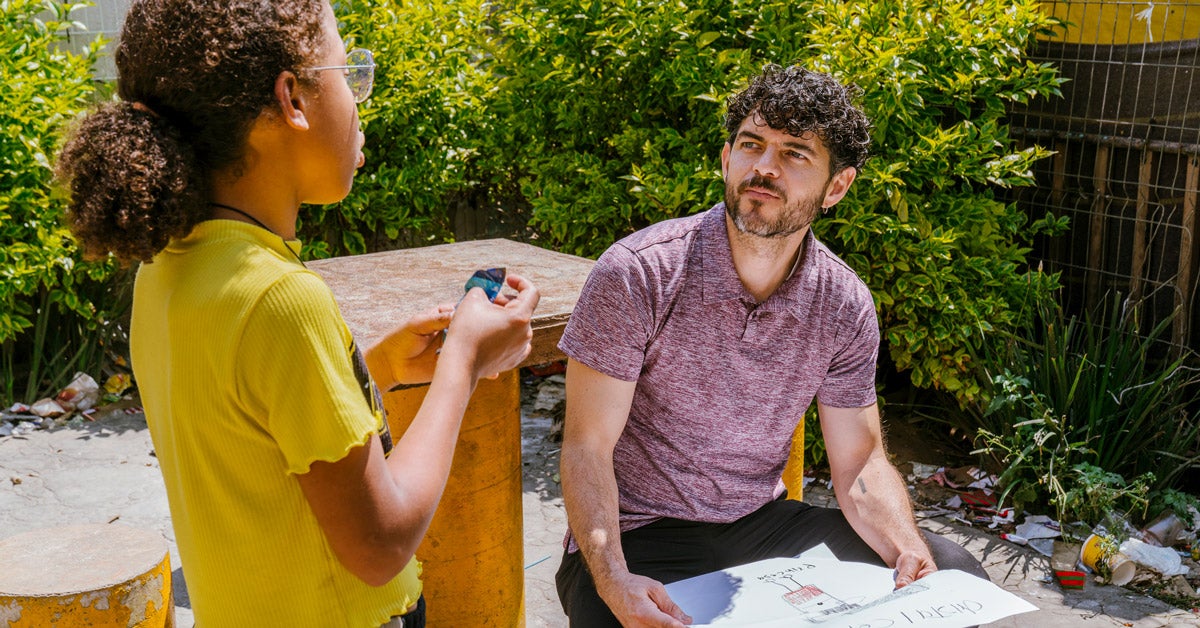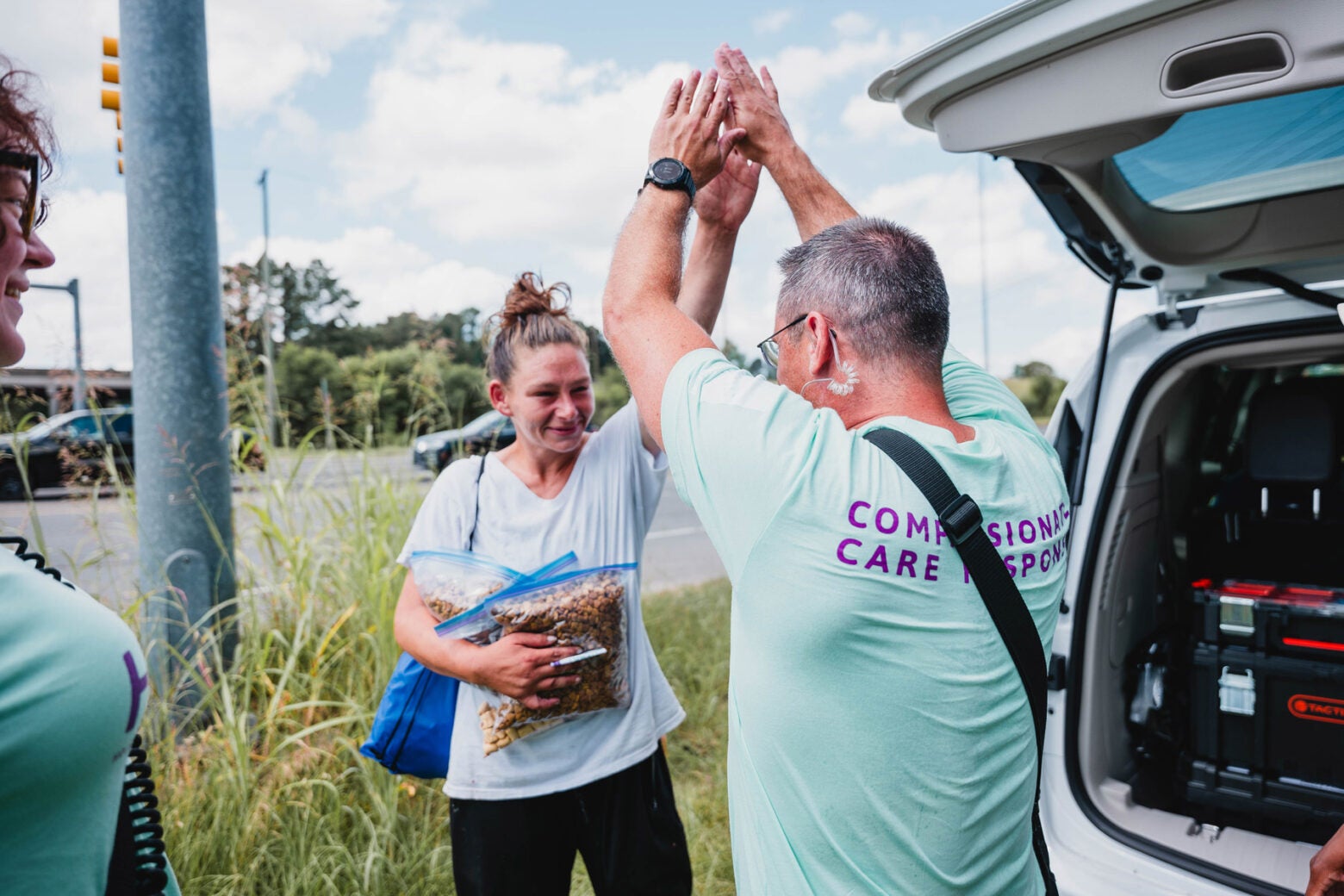
David Prater, a peer support specialist in Durham, North Carolina's HEART program, congratulates a community member in June 2024 after learning she plans to go to rehab for her drug addiction. Prater's unarmed HEART team responded after someone called 911 to report the woman for panhandling. Angela Hollowell for Tradeoffs
Ideas
Cities hope adding mental health workers to emergency response will reduce violence
After George Floyd’s murder and Black Lives Matter protests, Durham, North Carolina—like so many cities in the United States—started thinking in earnest about how to handle public safety differently. Residents and city officials alike wanted to see a reduction in police use of force. When city officials dug into their data, they saw that the vast majority of 911 calls police responded to in Durham had nothing to do with crime.
“They were about trespassing, or homelessness, or mental health crises,” says Ryan Levi, a reporter and producer for Tradeoffs. The finding created the opportunity for an alternative crisis response program, which Levi spent months studying.
The Durham program, launched in 2022, is called HEART, which stands for Holistic Empathetic Assistance Response Team. The team is actually multiple units who work across public safety. Mental health clinicians work inside the 911 call center, responding to crisis calls. Care navigators follow up with callers to help connect them to social services. First responder teams handle two different types of calls: Unarmed community response teams respond to calls about nonviolent behavior, and co-response teams, which pair clinicians with police officers, respond to situations that involve the threat or risk of violence.
In just two years, unarmed HEART teams have diverted more than 11,000 calls from the police—each one reducing the chance of unnecessary force. The program has also saved police officers more than 5,500 hours of time, allowing more focus on crime and converting some HEART skeptics into cheerleaders.
Levi talked with Jina Moore Ngarambe, managing editor of Harvard Public Health, about his three-part series, “The Fifth Branch,” a co-production of Tradeoffs and The Marshall Project which aired earlier this year.
This interview has been condensed and edited.
Sign up for Harvard Public Health
Delivered to your inbox weekly.
Harvard Public Health: How did you get interested in this idea of alternative crisis response as a health issue?
Ryan Levi: Nine-one-one departments around the country get so many calls every year that don’t fall into one of the existing buckets of public safety. In most of the country, for most of our history, response [to those calls] has been police.
That has dangerous and sometimes deadly consequences for people dealing with a mental health crisis. We wanted to see what it looks like when we’re sending non-police teams—unarmed teams—to respond to these crisis calls.
HPH: That has been happening around the country. How did you choose Durham as the site for exploring these issues?
Levi: We wanted to embed with a single community and see what’s working and what’s not. We reached out to a lot of different communities—Rochester, New York, New Orleans, Chicago, Denver. One of the reasons we picked Durham was experts around the country sang their praises. And they were willing to let me ride along with their teams on these 911 calls, to interview their leaders, talk to police officers, the police chief, people in the community, to dig into their data.
HPH: That openness is no small thing. Tell us about the early conversation among the people who became stakeholders in HEART and how the project overcame its first hurdles.
Levi: The city council set aside about $3 million to create this new community safety department. [To lead it] they tapped Ryan Smith, a career local government employee who most recently had been working on services for people coming out of incarceration.
He knew that he had two key constituencies. One was the community, which had been advocating for something like his department. And another was law enforcement.
HPH: And they were skeptical.
Levi: Well this had come out of the “defund the police” movement. So Smith knew that there would be, at best, skepticism—and at worst disdain—for what they were trying to do.
HPH: So he went first to the new police chief.
Levi: There, he kind of got lucky. Patrice Andrews had been a police officer in Durham for 20 years before she became the chief. As a Black woman growing up in North Carolina, she’d seen abuses by police. And as a police officer, she had seen that [officers] don’t have a lot of tools to help someone in a mental health crisis. She came in almost pre-bought in.
HPH: But it still took some convincing.
Levi: The biggest concern that officers had was that this would be unsafe. There was [also] this feeling among many police officers that “HEART is coming for our jobs.” So Ryan Smith and Chief Andrews were really intentional about [explaining] that “the fifth branch” was going to do something different, something police officers generally didn’t like doing, which is having to deal with these mental health crises, [so that] the officers have more time to go out on things that they really need to do—the true criminal calls.
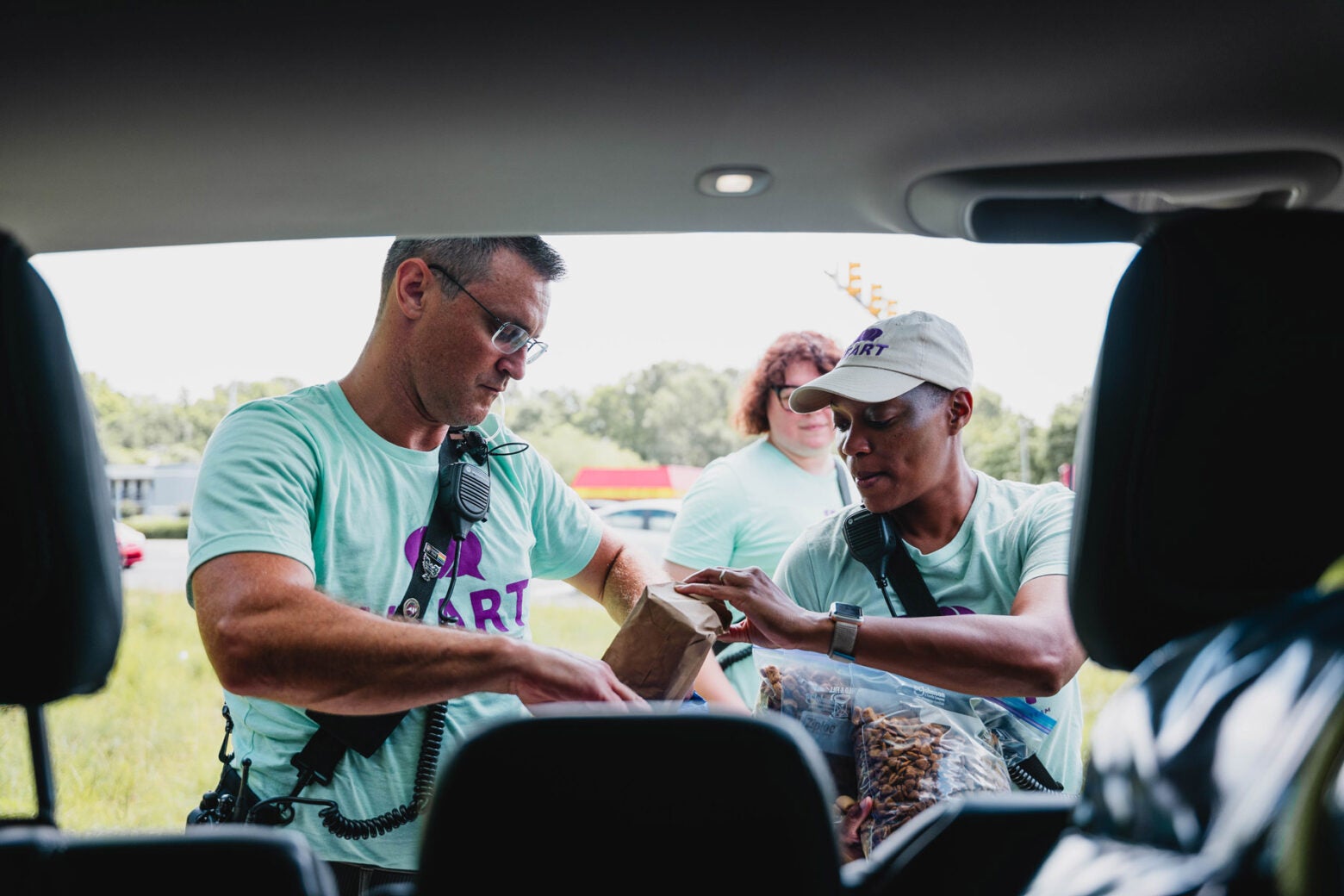
HEART peer support specialist David Prater and social worker Ashley Knight portion out dog food for a homeless resident who they received a 911 call about in June 2024.
Angela Hollowell for Tradeoffs
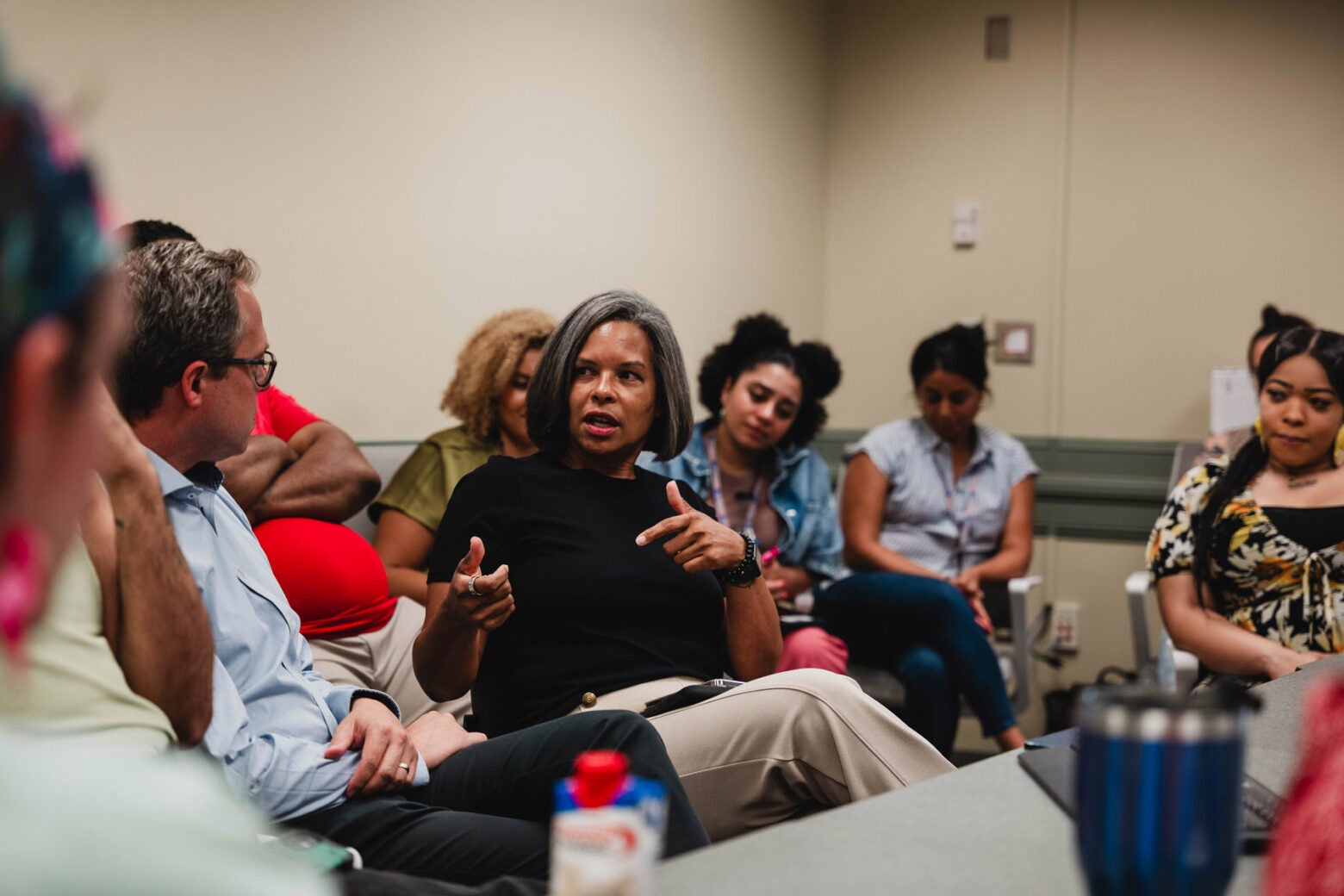
Patrice Andrews, Durham's police chief, talks with Ryan Smith, director of HEART, at a HEART staff meeting in June 2024.
Angela Hollowell for Tradeoffs
HPH: So ultimately, the police are involved in very few HEART calls. What about 911?
Levi: Right. Nine-one-one is touching every single call that HEART goes to. One of HEART’s first hires was a 911 veteran who helped set up the computer-assisted dispatch system. The dispatcher goes through a list of questions, and depending on the answers, the computer system gives a recommendation of who to send: an officer, a firefighter—or one of the HEART teams.
HPH: Those different types of response, the different teams—is that typical of alternative crisis intervention?
Levi: Lots of communities have some type of co-response. It often lives within their police departments, where social workers get sent out on some calls. You have crisis call diversion, which is a clinician sitting in a 911 call center—Austin, Texas, is one of the top models of that around the country. And lots of communities have unarmed teams. But I did not find any other community that has all of those, plus the dedicated follow-up care.
HPH: The follow-up care and the concern for the overall health outcome for the person in crisis—that sounds like the hardest piece. Can you unpack the challenges there for us a little bit?
Levi: Diverting those calls away from the police—that in and of itself is seen as a success. It’s making people safer because you’re limiting interactions between people and someone with a gun.
But less than 20 percent of the people HEART has engaged with on a 911 call [become connected] to longer-term care or support. It can be hard to follow up—some don’t have reliable phones or addresses. And then when they do connect, some folks are just like, “I don’t need that help. I don’t want that help.” Ultimately, HEART is designed to be a bridge, but they’re so often running into these problems where it’s a bridge to nowhere. I think the biggest challenge that folks are facing is there’s just not the mental health and addiction and housing services that are needed to actually interrupt the cycles of crisis that lead people to call 911.
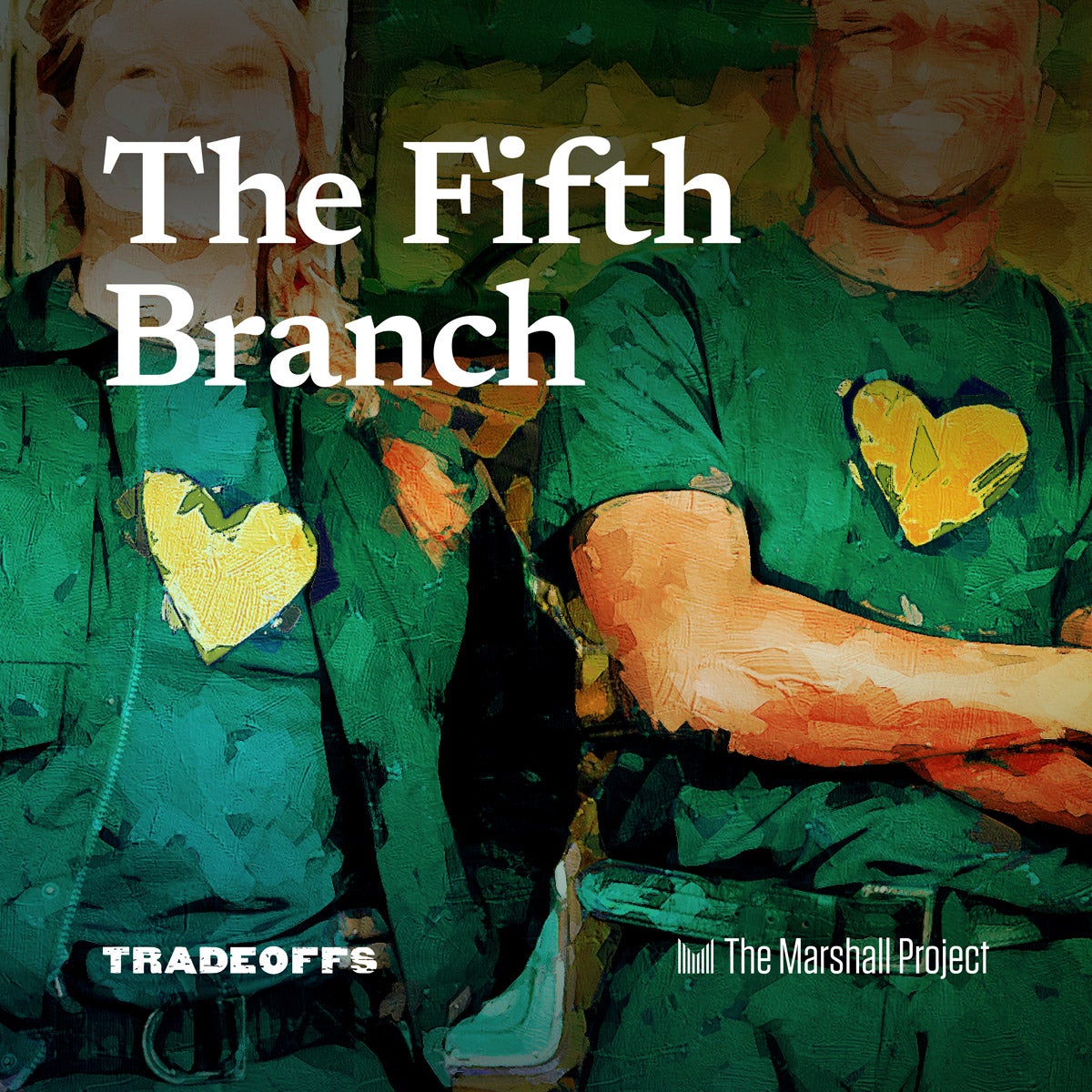
Listen to the three-part series, “The Fifth Branch,” at Tradeoffs.


